How to grow garlic – professional tips for all you need to know, from planting to harvesting
Learn how to successfully grow this favorite crop, whatever the size of your garden
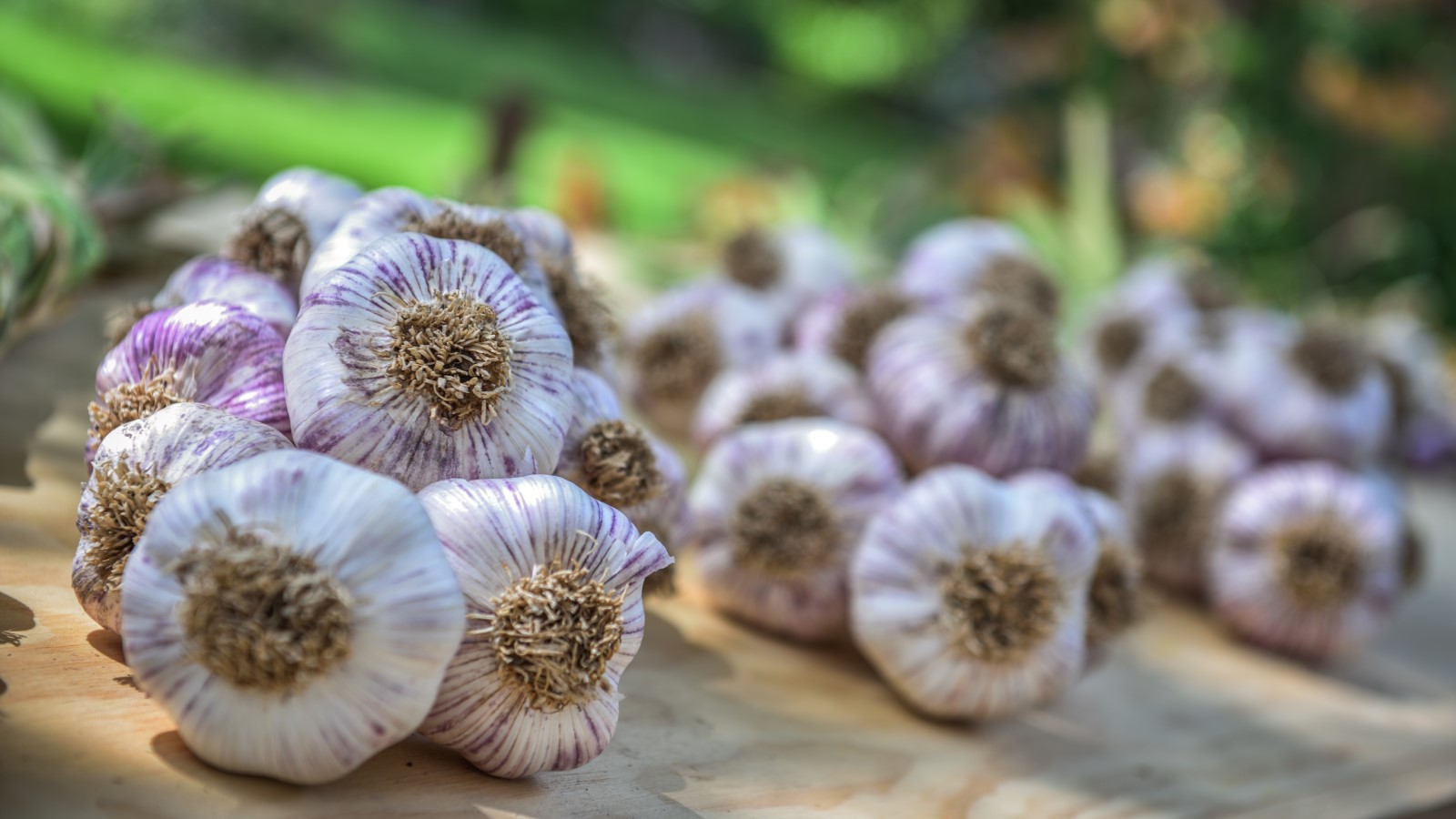

Drew Swainston
Garlic is one of those ingredients that is used almost constantly in the kitchen. Romantic Gallic images of long knotted bulbs can be intimidating when considering growing this bulb. However, garlic is a surprisingly easy crop to cultivate.
We’ve consulted industry experts to provide you with insider advice on how to grow garlic in your garden. This versatile crop can be cultivated in vegetable garden beds and containers, making it perfect for a garden of any size.
Get informed about when to plant garlic to enjoy its tasty bulbs throughout the year. It is also worth learning how to store garlic to ensure that your bulbs remain fresh and flavourful for longer.

What type of garlic to grow?
True garlic (Allium sativum) is available in softneck or hardneck form.
Softneck varieties store for a year, and the pliable necks can be plaited, making them great decor for the larder. Softneck garlic is the easiest garlic to grow and is the type commonly found in supermarkets.
Softneck garlic produces a lot of smaller cloves and can be stored for months. These are the ones you will typically see plaited on market stalls.
Hardneck varieties have a stronger taste, suit very cold areas, harvest earlier, and produce edible flower stems called scapes. However, they only store until spring.
Design expertise in your inbox – from inspiring decorating ideas and beautiful celebrity homes to practical gardening advice and shopping round-ups.
Growing both types of garlic ensures you have a supply of delicious garlic all year. However, hardneck bulbs are hardier, so a better choice if your garden experiences very cold winters.
Elephant garlic (Allium ampeloprasum) is a different type of plant. It looks like a big leek, but has a mild garlic taste and produces a few big cloves (which sometimes can’t be divided). This interesting leek-like vegetable suits sunny gardens in high-rainfall areas.
See the range of garlic bulbs to plant at Amazon
See the range of garlic bulbs to plant at Walmart
See the range of garlic bulbs to plant at Burpee
How to grow garlic - a step by step guide
Garlic is easy to grow with a little know-how. Here are five steps to follow, featuring expert tips from professional horticulturists.
1. Prepare the ground
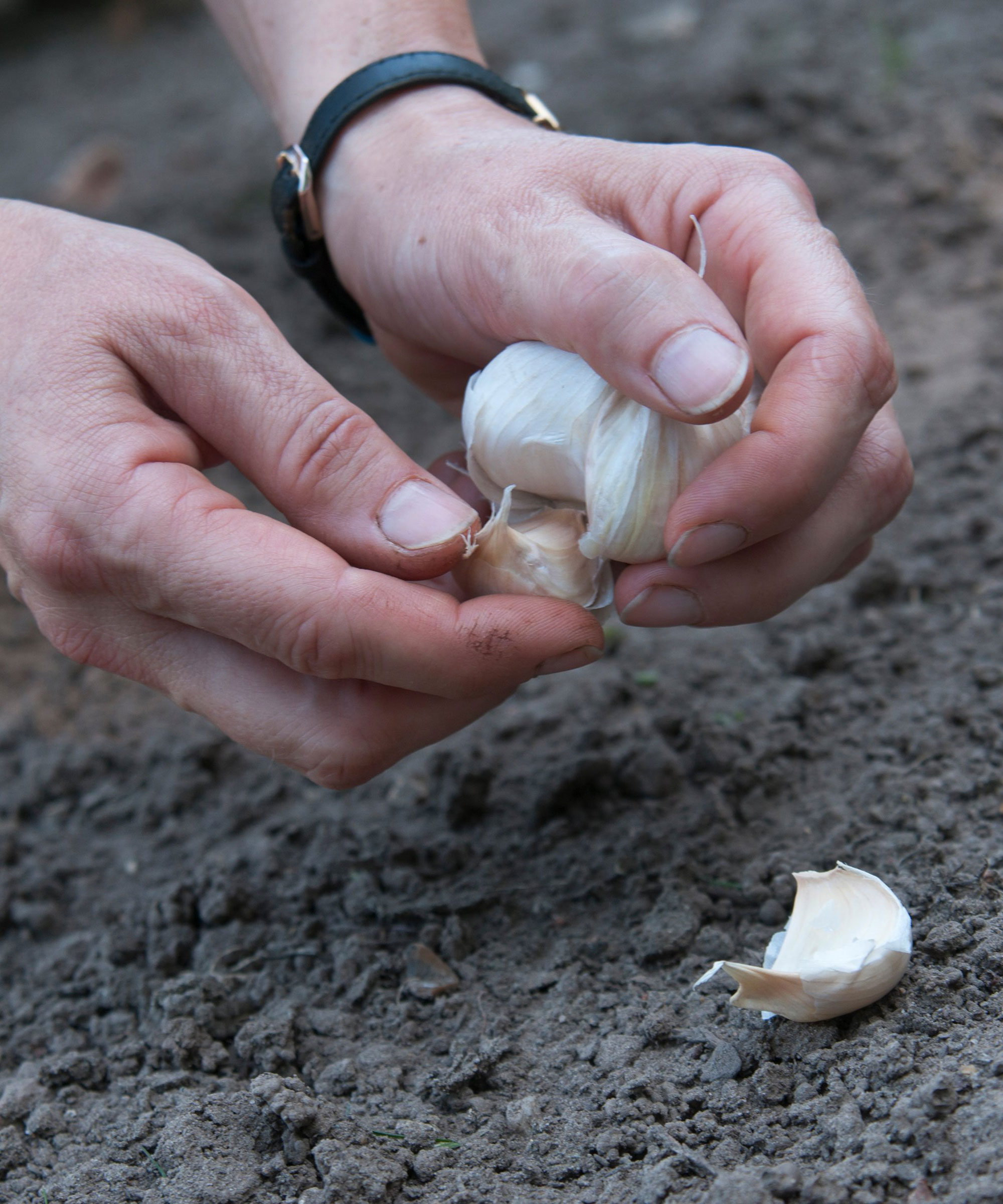
Photography/Tim Sandall
Garlic is an easy crop to grow as long as you get the basics right.
‘Garlic needs an open, sunny position and well-drained soil,’ explains Francesco Ponziani, Horticulturist at RHS Garden Harlow Carr.
Dig in plenty of garden compost, available at Amazon, before planting the garlic bulbs or well-rotted manure.
‘If your soil is very heavy clay, add grit or plant bulbs in containers instead,’ recommends Kate Turner, Gardening Guru at Miracle-Gro.
2. Plant the bulbs
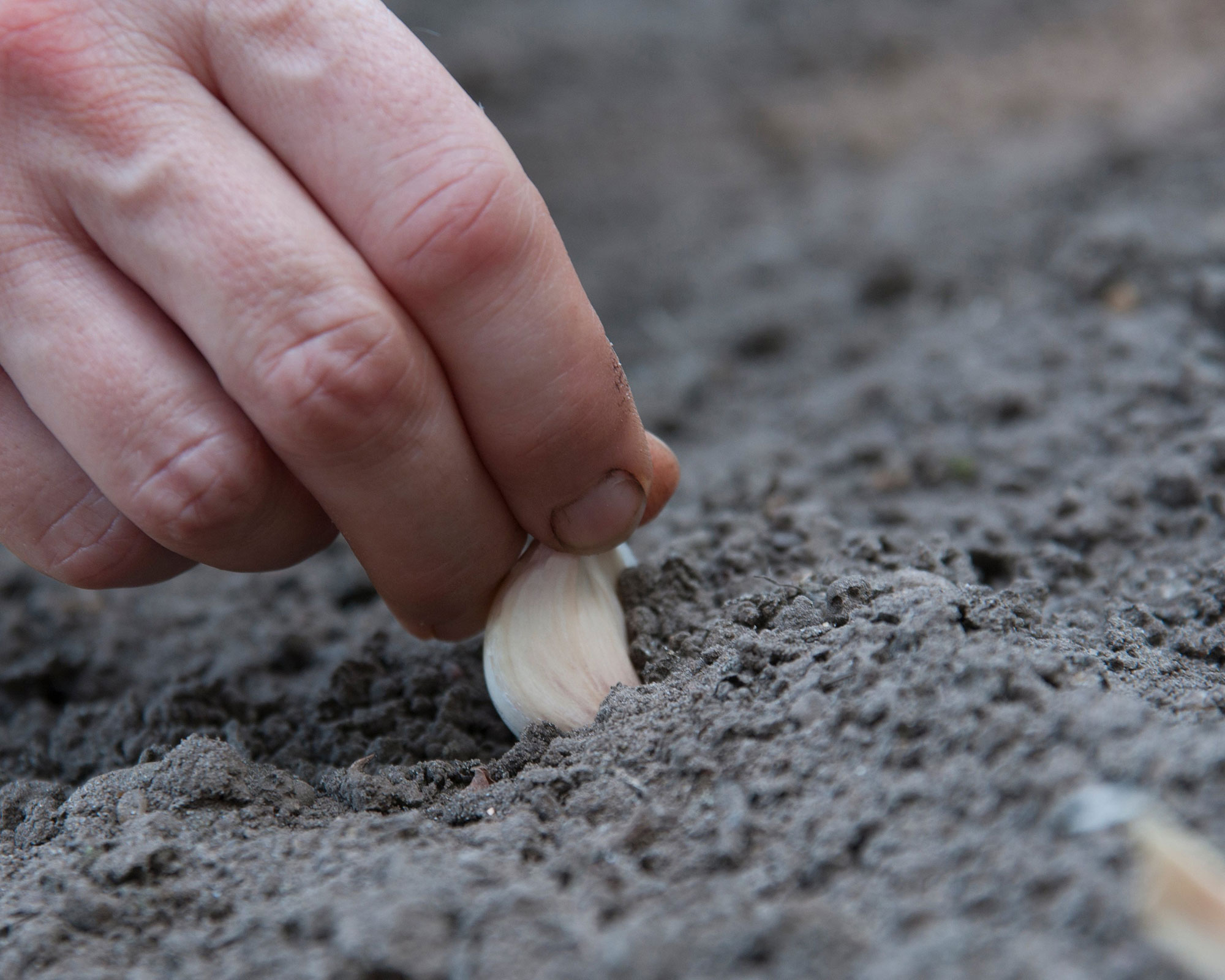
Photography/Tim Sandall
Before planting the bulbs, you will need to break them up into individual cloves. Plant each clove four to six inches apart, with at least 12 inches between each row.
If you are planting in a container, Francesco recommends using a four-inch pot and planting each clove in its own individual pot.
Make sure each clove is planted pointing upwards, with the tip of the clove showing above the soil. Water after planting to help the soil settle around the bulb.
3. Cover the bulbs as they grow

Photography/Georgi Mabee
Kate Turner recommends covering the area with horticultural fleece, available at Walmart, or cloches to stop birds pulling up the seedlings as they appear.
'Once the plants grow larger, they are less attractive to birds and the protection can be removed,’ she explains.
Continue to water the garlic bulbs as they grow. However, as soon as a bulb is formed, this is a sign to stop watering.
4. Cut off the scape
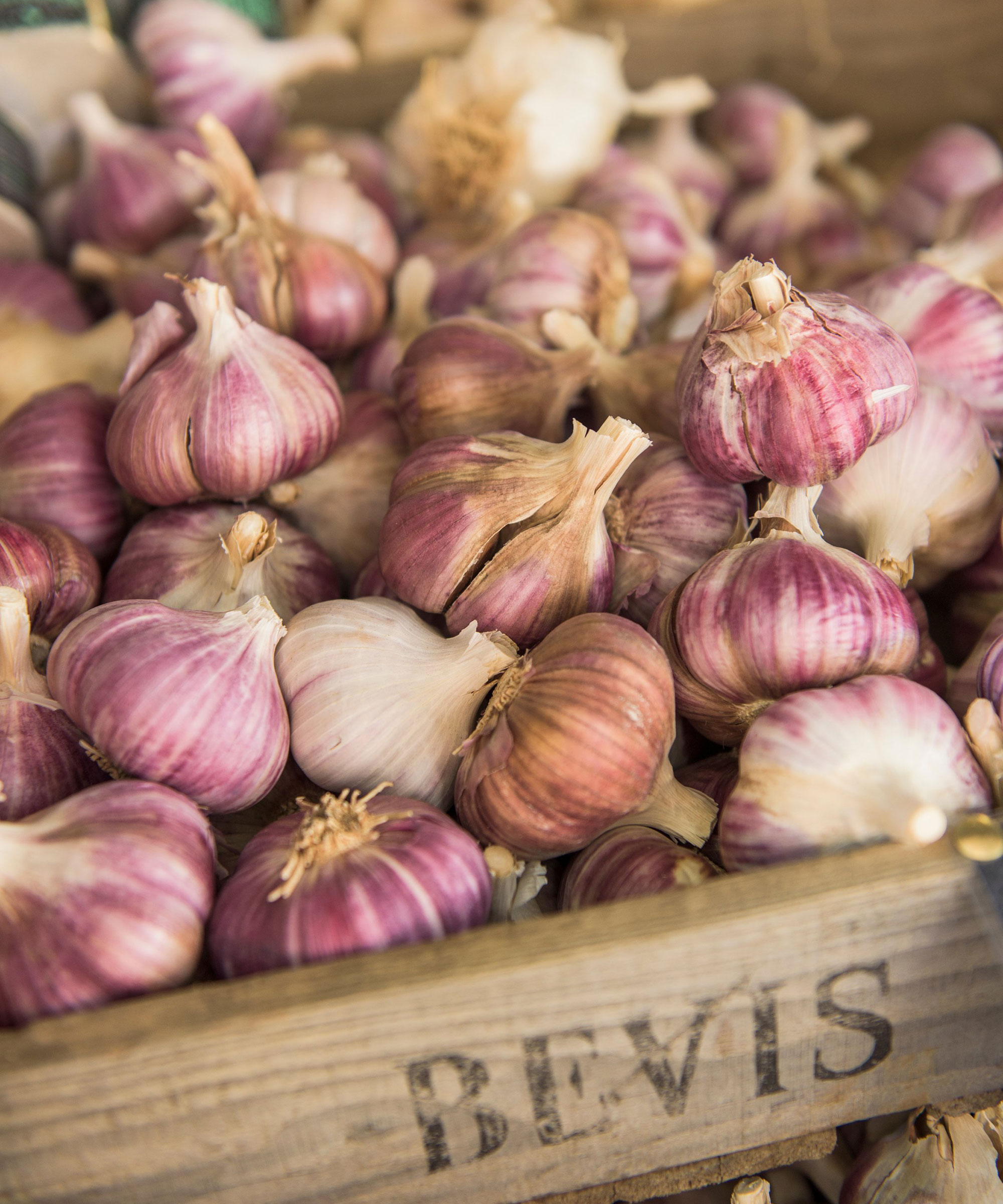
Photography/Adam Duckworth
Hardneck varieties of garlic will send up stalks, also known as scapes, from the centre of the plant. Since most garlic is grown for its bulbs, the scape can be removed to increase bulb size.
‘Cutting off the scape will send all the energy to the bulb, increasing the bulb size rather than putting energy towards flowers and seeds,’ explains Francesco. ‘This can increase the bulb size by 20%.’
If you are hoping to use the garlic flowers in your kitchen, their mild flavour makes them a lovely addition to salads and sauces, you can skip this step. However, it is best to remove the flower before it develops.
5. Harvesting the garlic
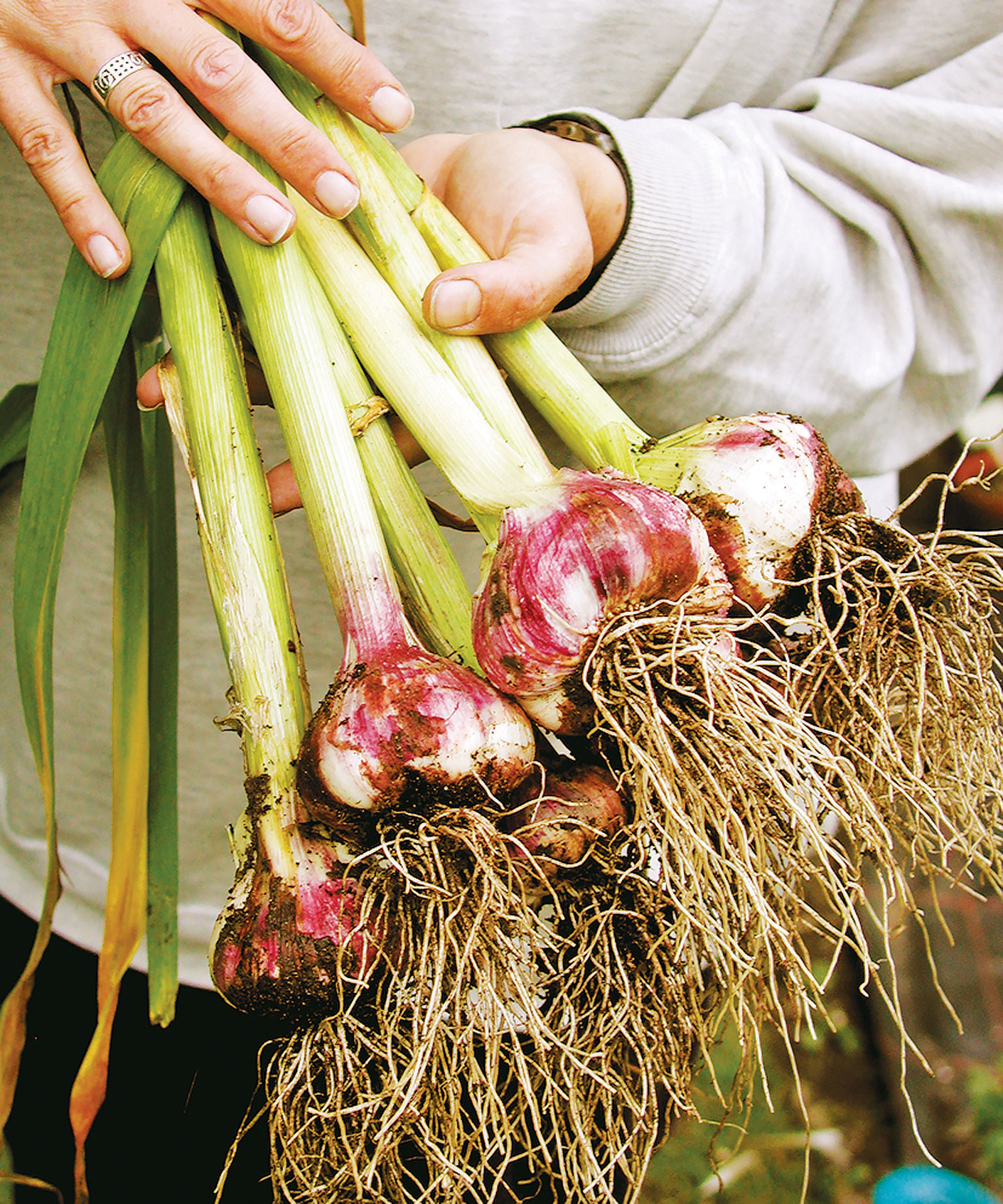
Photography/Alison Mundie
While the garlic is growing, you can take a few leaves here and there from the plants to use in salads. However, ‘don’t take too many at any time from one plant,’ warns Kate.
Some (but not all) of the leaves will have yellowed, and the bulb will be well developed, with curves around the cloves. As soon as the foliage has turned brown, you can harvest garlic.
When to harvest garlic? This will usually occur between early June and late August. Francesco’s top tip is to aim to harvest your garlic on a warm summer day.
‘If you get the chance, harvest garlic on a hot sunny day so that the newly dug bulbs can be left on the bed to dry out,’ he explains. ‘Helping with preservation.’
'Best harvest your garlic before the leaves go yellow,’ advises gardener and author Charles Dowding, who teaches no-dig edibles gardening in Somerset, UK.
'In fact, most of the leaves will still be green, and for softneck garlic, that means roughly by the end of June. For hardneck garlic, probably the middle of July.'
Don’t leave ripe bulbs in the ground too long, or they will rot. Dry it thoroughly (avoiding intense direct sun); then store somewhere cool and dry indoors that has good airflow. Hang it or store in baskets.
Can you grow garlic from grocery store garlic?
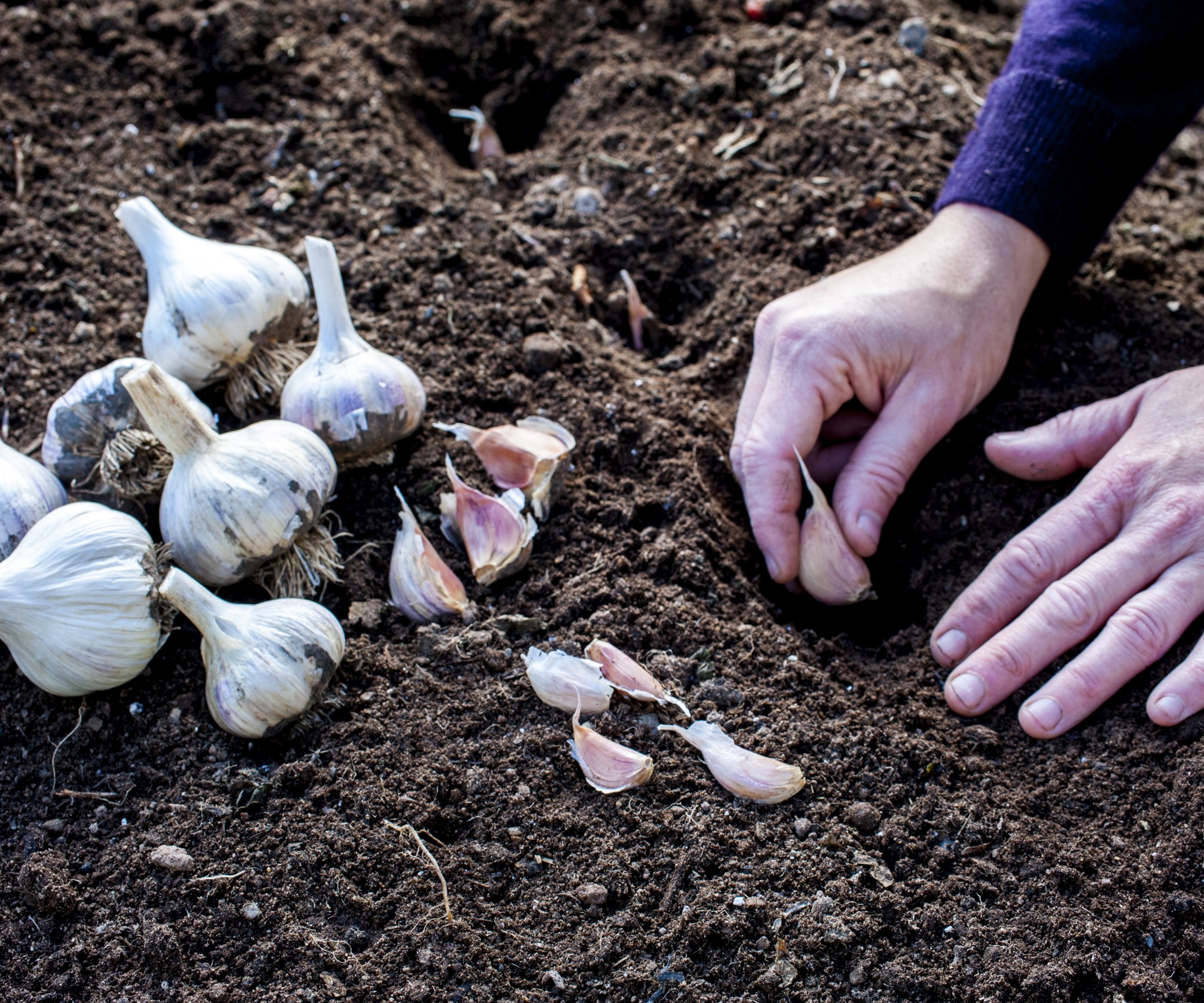
Garlic bulbs from a grocery store can be used to grow garlic. Unfortunately, while simple and budget-friendly, they do come with potential risks.
Grocery store bulbs often come from overseas and are treated with chemicals to prevent sprouting. Not knowing the origin poses a risk, and Jen McDonald, certified organic garden specialist and co-founder of Garden Girls, warns that a treated bulb may never actually sprout and grow.
‘There is a possibility that the garlic has been imported from another country and preservatives have been used to prolong the life of each bulb,’ she adds.
‘Once harvested and preserved, this garlic has likely undergone several different modes of transport and handling just to get it from farm to store. This process could take weeks or even months.’
Jen recommends visiting a local farmers’ market to source organic bulbs suited to your region, rather than merely choosing bulbs from store shelves.
However, there is a difference between garlic sold for culinary purposes and garlic grown specifically for seed. Primarily, seed garlic is certified to be free from diseases, while table garlic is not.
Planting table garlic presents a risk of spreading viruses into the vegetable garden, and some viruses, such as white rot, can remain in the soil for years. White rot affects all plants in the allium family, preventing the growth of onions, garlic, or leeks in that soil for many years.

Jen McDonald is a garden expert and co-founder of Garden Girls, LLC, based in Houston, TX. With 14 raised garden beds and 400 square feet of garden space, Jen grows cut flowers to peanuts, amaranth to okra, and everything in between.
FAQs
How long does it take to grow garlic?
Garlic can take almost 10 months to grow before you can harvest the bulbs. Depending on the variety you have planted, if you have planted in the fall, they can be ready from early June to late July.
What month do you plant garlic?
When to plant garlic? It is best to plant garlic in the fall. The bulbs need a period of cold weather in order to grow. Ideally, they need a one-to-two-month period of cold temperature for the bulbs to develop.
However, if it is too cold outside in fall, you can also plant them in Spring. ‘In my experience, fall-planted garlic is ready four to six weeks earlier than spring-planted garlic,’ explains Francesco.
Does garlic grow back every year?
Garlic can be grown as a perennial, providing garlic every year. However, because it is grown for its bulbs, it is usually grown as an annual and replanted each year.
If you choose to grow garlic as a perennial, you will need to leave the bulbs to develop and grow for a few years, during which you can harvest the milder-tasting leaves and flowers.
In a few years' time, you should be able to dig up and replant your homegrown garlic and follow the above instructions to produce your own bulbs of garlic.

Rebecca has been working as a homes and interiors journalist for over four years. She first discovered her love of interiors while interning at Harper's Bazaar and Town & Country during my Masters in Magazine Journalism at City, University of London. After graduating she started out as a feature writer for Women's Weekly magazines, before shifting over to online journalism and joining the Ideal Home digital team covering news and features. She is passionate about shopping for well-crafted home decor and sourcing second-hand antique furniture where possible.
- Drew SwainstonContent Editor
You must confirm your public display name before commenting
Please logout and then login again, you will then be prompted to enter your display name.